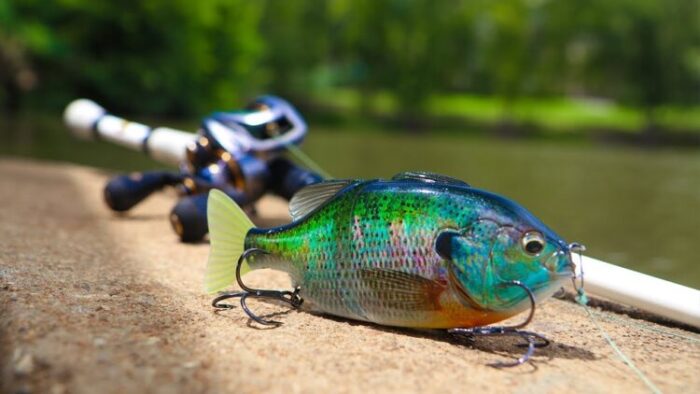Bluegill Swimbait rank among the most prolific forage species populating lakes and rivers across North America. Abundant and slow-moving, they provide a regular buffet for hungry bass lurking nearby. Wise anglers leverage these insights by rigging realistic bluegill imitating lures called swimbaits to tap into bass’s natural explosive reactions towards helpless panfish. When other presentations fail, bluegill swimbaits often spark strikes by mimicking vulnerable baitfish bass instinctively attack.
Realistic Details Make the Difference
Not all bluegill lures prompt savage attacks. The most effective patterns precisely mimic details like coloration, body shape, fin position, and movements that bass recognize and respond to automatically. Superior bluegill baits feature:
• Accurate color mixes with correct orange, olive, and blue green shading
• Oversized pectoral fins aligned horizontally
• Detailed scale textures and lateral lines
• Protruding mouth and gill plates
• Thin supple tail sections that kick realistically
Premium soft plastic formulas that move fluidly through water better imitate live panfish struggles. Choosing appropriate sizes also matters, as bass focus on easier meals, making 5-7 inch swimbaits ideal over 10 inch models during tough conditions.
Prime Bass Habitats to Target
While bluegill patterns tempt strikes anywhere, focus efforts on zones holding concentrations of both baitfish and bass:
• Shallow Coves – Especially with scattered vegetation and wood cover
• Creek Channels – Ambush points behind current breaks
• Docks – Shadowy areas underneath attract bluegill schools
• Weed Edges – Perimeters allow bass stealthy attacks into openings
• Lily Pad Fields – Intermittent holes give bass sneak attack lanes
In these fertile waters, a well-presented bluegill swimbait triggers reflex strikes from bucketmouths assuming an easy meal swims within range.
Retrieving Swimbaits Effectively
While bluegill replicas look amazingly realistic, imparting life-like motions seals the deal. Using long casts, count lures down to appropriate depths before beginning erratic motions.
• Subsurface – Use twitching rod to make lure “dart” left and right imitating evasion
• Surface – Aggressive pops and pauses emulate insects or distressed baitfish
• Vegetation – Reel quickly so tail vibrates through gaps between stalks
Enhancing strikes involves allowing the swimbait to rest paused after darting movements before resuming action. This replicates winded baitfish temporarily immobile after attempting to flee. Savvy anglers can also rig a second “trailer” hook to land more hookups on short-striking bass.
Conclusion
Leveraging insight into bass targeting vulnerable bluegill, specially designed swimbaits replicating their key visual and behavioral cues result in fierce assaults even from previously uninterested fish. Rigging colors, shapes, sizes and actions that perfectly mimic panfish elicits involuntary predatory reactions from bass patrolling prime habitats. So equip a favorite rod with realistic bluegill lures and maximize success hooking bucketmouth giants tracking down their next meal.

